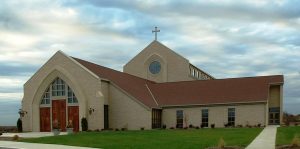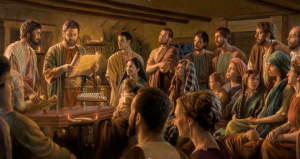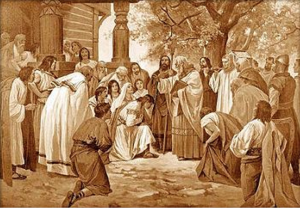by Lim Soon Hock, Empowering Churches
Click here for Part 1, Click here for Part 2, Click here for Part 3

THE ROLE OF CHURCH LEADERS
The second part of the research question asks, “What is a primary role of church leaders that is needed to develop healthy churches?” By “role” we mean the function of church leaders. The fifth column in Table 3 below presents the views of five (out of nine) church health models about the primary role of church leaders. It appears that there is much agreement between them.
For Dever, the role of church leaders is to edify the church. Koster and Wagenveld state that it is to help believers find their ministry according to their gifts. Or, in the words of Callahan, their life’s searches.
Schwarz says it is to empower believers. And for Macchia, it is to raise believers; in other words, to develop the believers. While EFCA’s and Searcy’s models do not specifically explain their perspectives of the primary role of church leaders, nonetheless, they clearly sate that healthy churches are Intentional about leadership development.


In sum, the collective view of church health proponents about the role of church leaders is: to edify the people in the church for their spiritual growth and to empower them to serve the Lord with their God-given gifts in ministry.
A Theological Perspective of the Role of Church Leaders
A study of the NT shows that church leaders have many functions. Norman L. Geisler states that an elder is an overseer (1 Pet 5:1-4), a ruler (Heb 13:17), an under-shepherd (1 Pet 5:1-4), a teacher (1 Pet 5;2, 1 Tim 3:2, Tit 1:9), an apologist (Ph 1:17, Tit 1:9), an arbiter of disputes (Acts 15:2), and a watchman (Heb 13:17).1
 Alexander Strauch distils the role of shepherd elders into four areas: (1) protecting (Acts 20:28-31, Tit 1:9b), (2) feeding (1 Tim 5:17-18), (3) leading (1 Tim 5:17a, and (4) caring for the practical needs of the flock (Acts 6:1-6).2 Grudem condenses the role of an elder even further to simply governing (1 Tim 5:17) and teaching (Eph 4:11, 1 Tim 5:17).3
Alexander Strauch distils the role of shepherd elders into four areas: (1) protecting (Acts 20:28-31, Tit 1:9b), (2) feeding (1 Tim 5:17-18), (3) leading (1 Tim 5:17a, and (4) caring for the practical needs of the flock (Acts 6:1-6).2 Grudem condenses the role of an elder even further to simply governing (1 Tim 5:17) and teaching (Eph 4:11, 1 Tim 5:17).3
From the foregoing descriptions it appears that the primary roles of church leaders are to provide spiritual oversight over the church and spiritual care for the people in the church. However, this perspective fails to consider the mission of the church, and corollary, the role of church leaders in relation to the church’s mission.
The Mission of the Church and the Role of Church Leaders
Christopher Wright states that when we “draw our biblical theology of the church’s mission from the whole Bible…it becomes clear that the mission of God’s people is vast and various.”4 It is beyond the scope of the paper to discuss the depth and breadth of the church’s mission. Suffice to say that God is on a mission in the world, and the church is called to participate in His mission.5 How the church participates in God’s mission is through its missions. “Missions” in the plural, as Wright points out, refers to “the multitude of activities that God’s people can engage in to participate in God’s mission.6
In order for believers to effectively participate in God’s mission they need more than spiritual nurture for their own spiritual growth; they need to be empowered for ministry and mission. For example, the Bible teaches and commands that all believers are to do the “works of service” (Eph 4:12) and to “make disciples” (Mt 28:19). The ability to carry out these activities of God’s mission, as it is with all the other activities of God’s mission, does not come naturally. Believers need to be taught, trained, equipped, and empowered to carry out God’s mission.
 Ephesians 4:11-13 states,
Ephesians 4:11-13 states,
11 It was he who gave some to be apostles, some to be prophets, some to be evangelists, and some to be pastors and teachers, 12 to prepare God’s people for works of service, so that the body of Christ may be built up 13 until we all reach unity in the faith and in the knowledge of the Son of God and become mature, attaining to the whole measure of the fullness of Christ.
According to the above text, the people in the church are to do the works of service.7 The people who prepare or equip (katartismos) them are the leaders that God gifts to the church, such as the apostles, prophets, evangelists, and pastor-teachers.8 R. C. Sproul comments,
“…in addition to ministering to the needs of people, leaders are called to train people, to give them the equipment, the tools, the knowledge and the skills necessary for works of service. The most effective churches that I know are churches where the ministerial staff devote many hours in training and mobilising their congregations to be mighty armies of saints, as they minister to a dying world.”9
The result arising from the leaders’ training and the members’ serving is the building up of the church.10 An end-goal is that the church becomes a “mature man” (andra teleion). Or, to use our modern-day metaphor—a “healthy church”.
In tandem with the above, Colin Marshall and Tony Payne call for ministry mind-shifts. Their list of 10 ministry mind-shift items include: from running programmes to building people, from running events to training people, from relying on training institutions to establishing local training, from engaging in management to engaging in ministry and from seeking church growth to desiring gospel growth.11
They propose a mental image of the pastor as trainer who functions as a preacher and trainer, instead of a clergyman who is a preacher and service-provider or a CEO who is a preacher and manager.12 Their comparative chart of the three images of the pastor is helpful13 (see Table 4 below).

From the foregoing discussion we understand that church leaders have many responsibilities. However, in the light of developing a healthy church that effectively engages in its mission, a primary role, then, of church leaders is to empower the people in the church for their mission.
Views on Leadership Roles from Pastors and Church Leaders
In the survey conducted for the research paper, the respondents were asked to choose one from out of six leadership roles that best reflected their leadership role in the church. The six leadership roles were: (1) teacher and preacher, (2) intercessor, (3) counsellor, (4) pastor, (5) equipper, and (6) oversight.14 An “others” category was included for the respondents to write their own, should none of the above suitably reflected their leadership role. The results were: teacher and preacher (7 respondents), intercessor (0), counsellor (0), pastor (1), equipper (2), oversight (2), and others (2) (see Appendix B, Table 6).
Secondly, the respondents were asked to rank the leadership roles that church leaders should perform in order of importance (1 being the most important, and 6 being the least important). From the average ranking collated for each leadership role, teacher and preacher was placed as the most important (average rank of 2.46). This was followed by the roles of pastor (2.77) and oversight (2.85). Further down in order of importance were the roles of intercessor (3.61), equipper (4.77), and lastly, counsellor (5.46)15
The views of the respondents reflected the traditional theological perspective of the role of church leaders. They considered teaching believers the Word of God, providing pastoral care for members, and ensuring proper spiritual governance over the church as the priority functions of church leaders. Equipping members for service is given a low priority.
However, this view of the respondents goes against the emphasis of many church health proponents, and including Sproul, Marshall and Payne. The aforementioned experts contend that a primary role of church leaders is to empower the believers for their spiritual growth, service, and mission so that the whole church may be built up (Eph 4:11-13). For example, when leaders carry out their functions, such as teaching and preaching, it must be with the intent of empowering believers for their spiritual growth, service, and mission, so that the latter can effectively participate in the development of a healthy church and advancement of the Kingdom of God.
CONCLUSION

The research has ascertained that for a church to develop as a healthy church it needs a certain kind of leadership. It’s a leadership that leads from out of the bond of relationship with the followers and empowers them for service, so that together they may build up the body of Christ.
This is not to say that the other types of leadership attributes are not important. They are important, but relational leadership is like the foundation upon which all the other leadership types, like the visionary, transformational, and administrative types, build on. When there is a strong, healthy, and trusting relationship between leaders and followers, the followers will follow the leaders, not because they have to but because they want to.
Similarly, the emphasis on empowering leaders as a primary leadership role is not to deny the importance of the other roles. However, the leadership role must go beyond the “maintenance” of the personal spiritual lives of the members and corporate spiritual governance of the church to that of empowerment of the members for service and mission, so that everyone can effectively participate to build up the body of Christ.
Jesus exemplified the empowering leader.16 Beyond teaching and preaching to the masses and ministering to their needs, He focussed on training the twelve (Mk 9:30-31, Mt 10:1ff). Paul exemplified the empowering leader. Beyond evangelism, planting churches, and teaching, he focussed on training others for ministry and mission such as Timothy, Titus, Silas, Priscilla and Aquila.
The contemporary Malaysian pastor and church leader will do well to emulate their example if they are to develop healthy churches. The neglect of this vital leadership role of empowering or equipping the church for service might be a major reason for the poor health of many churches in Malaysia.

 In a proposal of a composite framework for Christian leader development outcomes Keith R. Krispin’s third category, out of five, is “Relational Skills”.
In a proposal of a composite framework for Christian leader development outcomes Keith R. Krispin’s third category, out of five, is “Relational Skills”. They were asked to choose one from out of seven leadership types that best reflected their personal type of leadership. The seven leadership types were: (1) coach, (2) visionary, (3) servant, (4) transactional, (5) transformational, (6) relational, and (7) administration.
They were asked to choose one from out of seven leadership types that best reflected their personal type of leadership. The seven leadership types were: (1) coach, (2) visionary, (3) servant, (4) transactional, (5) transformational, (6) relational, and (7) administration.
 Closely related to the nuance of the parent imagery to characterise church leaders is the often-used biblical imagery of the shepherd. Peter applied the imagery to the elders when he addressed them about their responsibility to believers whom he called “God’s flock” (1 Pet 5:2). Paul used it when he gave his farewell discourse to the Ephesian elders at Miletus (Acts 20: 28).
Closely related to the nuance of the parent imagery to characterise church leaders is the often-used biblical imagery of the shepherd. Peter applied the imagery to the elders when he addressed them about their responsibility to believers whom he called “God’s flock” (1 Pet 5:2). Paul used it when he gave his farewell discourse to the Ephesian elders at Miletus (Acts 20: 28).




 He has to see himself as one of God’s gifts to the church whose function is to equip the saints for the work of ministry (Eph 4:11-13). And the area which he is to equip his church is naturally in the area of his giftedness or expertise, which is to shepherd or disciple others.
He has to see himself as one of God’s gifts to the church whose function is to equip the saints for the work of ministry (Eph 4:11-13). And the area which he is to equip his church is naturally in the area of his giftedness or expertise, which is to shepherd or disciple others.

 The New Testament Concept of the Church
The New Testament Concept of the Church The foremost characteristic of the church would be the centrality of Christ. Secondly, it’s about a people coming together for the same cause.
The foremost characteristic of the church would be the centrality of Christ. Secondly, it’s about a people coming together for the same cause.
 In the context of Jeremiah 29:13, obviously seeking God is not simply about hearing what the Lord has to say—they had just heard from Him. Seeking God in this case was about the exiles aligning themselves to Him and His purpose. It is one thing to know what the Lord wants—it is another thing to align ourselves to what He says.
In the context of Jeremiah 29:13, obviously seeking God is not simply about hearing what the Lord has to say—they had just heard from Him. Seeking God in this case was about the exiles aligning themselves to Him and His purpose. It is one thing to know what the Lord wants—it is another thing to align ourselves to what He says.

